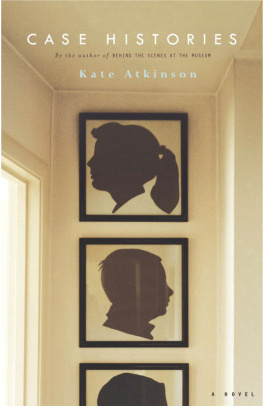The small village of Lythe emerged from the shrinking forest, a straggle of cottages and a church with a square clocktower. Its inhabitants tramped back and forward with their eggs and capons and occasionally their virtue to Glebelands, the nearest town, only two miles away a thriving marketplace and a hotbed of glovers and butchers, blacksmiths and vintners, rogues and recusants.
In 1580, or thereabouts, a stranger rode into Lythe, one Francis Fairfax, as dark and swarthy of countenance as a Moor. Francis Fairfax, lately ennobled by the Queen, was in receipt, from the Queens own hand, of a great swathe of land north of the village, on the edge of what remained of the forest. Here he built himself Fairfax Manor, a modern house of brick and plaster and timbers from his newly owned forest oaks.
This Francis was a soldier and an adventurer. He had even made the great grey ocean crossing and seen the newfoundlands and virgin territories with their three-headed monsters and feathered savages. Some said he was the Queens own spy, crossing the Channel on her secret business as frequently as others crossed Glebelands Green Moor.
Some also said that he had a beautiful child wife, herself already with child, locked away in the attics of Fairfax Manor. Others said the woman in the attics was not his child wife but his mad wife. There was even a rumour that his attics were full of dead wives, all of them hanging from butchers hooks. There were even those who said (this even more unlikely) that he was the Queens lover and that the great Gloriana had borne him a clandestine child which was being raised in Fairfax Manor. In the attics, naturally.
It is fact, not rumour, that the Queen stayed at Fairfax Manor in the course of escaping an outbreak of plague in London, sometime in the summer of 1582, and was observed admiring the butter-yellow quince and flourishing medlar trees and dining on the results of a splendid early morning deer hunt.
Fairfax Manor was famous for the thrill of its deer chases, the softness of its goose-feather mattresses, the excellence of its kitchens, the ingenuity of its entertainments. Sir Francis became a famous patron of poets and aspiring playwrights. Some say that Shakespeare himself spent time at Fairfax Manor. Keen supporters of this explanation of Shakespeares famous lost years of which there are several, mostly mad point to the evidence of the initials WS carved into the bark of the great Lady Oak and still visible to the keen eye to this day. Detractors of this theory point out that another member of the Fairfax household, his sons tutor, a Walter Stukesly, can claim the same initials.
Perhaps Master Stukesly was the author of the magnificent masque (The Masque of Adonis) which Sir Francis ordered up for the Queens entertainment during her midsummer visit to Lythe. We can imagine the theatricals being performed, using the great forest as a backdrop, the lamps glimmering in the trees, the many mechanical devices used in the telling of the tragic tale, the youthful Adonis dying in the arms of a young boy Venus under the Lady Oak a young, handsome oak much of an age with Francis Fairfax that once stood at the heart of the heart of the forest and now guarded its entrance.
It was not long after the Queens departure from Lythe that Franciss wife first appeared, a real one made of flesh and blood and not kept in the attics, but none the less an enigmatic creature whose beginning and end were veiled in mystery. She arrived, they said, at the door of Fairfax Manor one wild, storm-driven night, dressed in neither shoes nor hose nor petticoat, dressed in nothing in fact but her silk-soft skin yet with not a drop of rain on her, nor one red hair on her head blown out of its place.
She came, she said, from an even grimmer north and her name was Mary (like the dreaded Caledonian queen herself). She did not persist in her nakedness and allowed herself to be clothed in silks and furs and velvets and clasped in jewels by an eager Sir Francis. On her wedding morning Sir Francis presented her with the famous Fairfax jewel much sought after by metal detectors and historians well documented in Sir Thomas Ahearnes famous



















